Dr. Warda Ashraf
Home Research Areas Team Members Lab Facilities Publications
[1] Infrastructural materials with low carbon footprint
Concrete is the most widely used construction material on earth, and yet this is one of the biggest emitter of CO2 (read more from this BBC report). Reducing this carbon footprint would require reducing the consumption volume of Ordinary Portland Cement (OPC) in concrete.
In our research team, we try to (i) develop and understand low-carbon cementitious systems that can be used as an alternative to OPC and (ii) use industrial by-products as supplementary cementitious materials (SCM) to partially replace OPC in concrete.
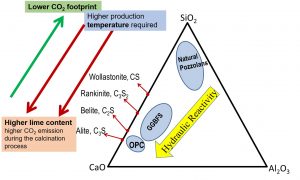
Low-lime calcium silicates as sustainable binders (Learn more)
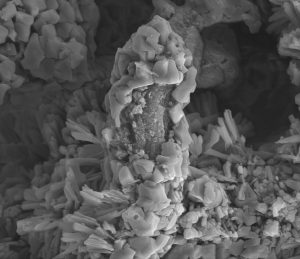
Chemically activated belite (dicalcium silicates) as an alternative cementitious material. (Learn more).
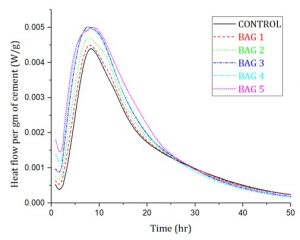
Cement heat of hydration with woody bioash.
[2] CO2 storage in infrastructural materials
In addition to the existing natural storage systems, man-made sinks can sequester a significant portion of greenhouse gas. Specifically, construction materials (including concrete, soil, construction blocks) can be the sinks of CO2 via carbonation reaction under favorable conditions. In this process, construction materials store CO2 by forming stable mineral carbonates. Added advantage is that these mineral carbonates can improve the mechanical performance of infrastructural materials within a relatively short duration (hours to a few days).

Conceptual representation: carbonation of construction materials. (Learn more)

CO2 sequestration capacity of portland cement (OPC). (Learn more)

Calcium carbonate formation during carbonation of calcium silicates. (Learn more)
[3] Durability of infrastructural materials
Durability of materials significantly affects the life cycle cost of infrastructures. Our goal is to enhance the longevity of materials by affording new insights on the damage mechanism and by incorporating novel materials and techniques in construction.

Factors affecting freeze-thaw resistance of pavement concrete. (Learn more)

SEM image showing deicing salt induced damage in concrete (formation of magnesium oxychloride, learn more).
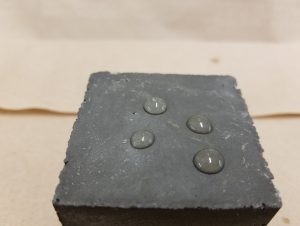
Hydrophobic cement mortar (low-permeability can improve durability by reducing the penetration of salt and water).
[4] Advanced experimental techniques
We frequently use advanced experimental techniques to understand chemomechanical properties of materials at nano-to-micro scale. Such techniques are helpful to understand the mechanism of materials’ degradation and/ or evolution under specific environmental conditions.

Elastic modulus variation in microscopic length scale of materials. (Learn more)
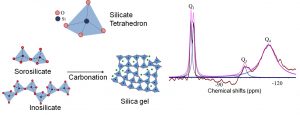
Silica polymerization during carbonation (measurement technique: 29Si NMR). (Learn more)
[5] Utilization of nanomaterials


[6] Soil stabilization using carbonation
Learn more here: carbonating-subgrade-materials-for-in-situ-soil-stabilization

